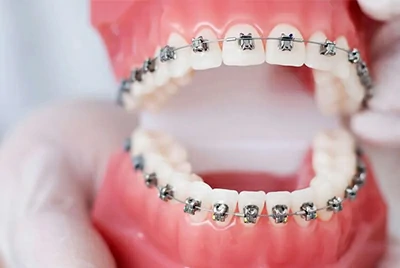
NiTi Orthodontic Archwires: Comfortable, Efficient & Customizable
NiTi orthodontic archwires are essential components in modern orthodontics, utilizing the shape memory and superelasticity of nickel-titanium alloy to deliver a consistent, gentle force of 50–300 g, activated by intraoral temperature. Compared to stainless steel wires, NiTi archwires significantly reduce patient discomfort, lower the risk of root resorption by 40%, and shorten treatment time by approximately 30%.
As a titanium alloy manufacturer, Chalco Titanium supplies high-precision straight and spool-form NiTi wires, and offers custom arch forms—such as Ovoid, D-form, Reverse Curve, and Lingual—based on intraoral scan models or bracket systems, providing a one-stop selection solution for orthodontists and distributors.Welcome contact
Why Choose NiTi Archwires?
1. NiTi archwires activate via heat-triggered transformation (Af ≈ 35 °C), gradually returning to their preset shape in the oral environment. This avoids sudden force spikes, reducing pain scores by up to 50%.
2. Their superelasticity allows for 6–8% recoverable deformation, making them ideal for complex cases like deep bite, open bite, or crowding over 8 mm, especially when paired with Reverse Curve, Lingual, or D-form geometries.
3. With a constant force output of 200–400 g, NiTi wires extend adjustment intervals from 6 to 8 weeks, helping reduce overall treatment time by around 30%.
4. Made from medical-grade alloys and certified under ISO 10993-5 cytotoxicity standards, NiTi wires release less than 0.1 μg/cm²·day of nickel ions, significantly lowering risks of allergy and inflammation.
Types of NiTi Orthodontic Archwires
NiTi Archwires by Material & Performance
Super Elastic NiTi Wire
Activates at room temperature, delivering up to 8% reversible deformation and a consistent light force (200–400 g). Ideal for early-stage alignment, especially in mild-to-moderate crowding cases, with >85% crowding improvement in 3 months.
Contact us now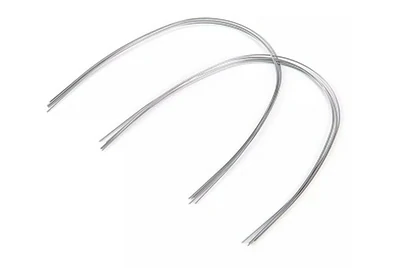
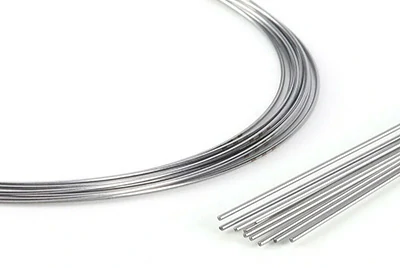
Heat-Activated NiTi Wire
Engineered with Af ≈ 35 °C, activated by intraoral temperature. Offers progressive force and superior comfort, reducing pain. Especially suitable for adults or pain-sensitive patients, avoiding sudden force spikes typical of conventional archwires.
Contact us nowCopper NiTi Wire
Alloyed with 6% copper to enhance transformation behavior and narrow hysteresis. Ensures more precise mechanical response and 5% lower force decay, ideal for mid-to-late stage space closure and fine adjustments.
Contact us now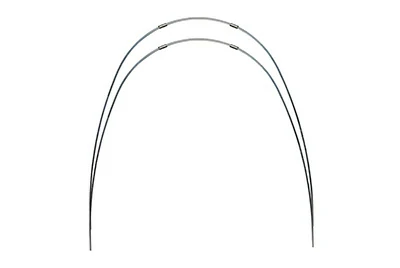
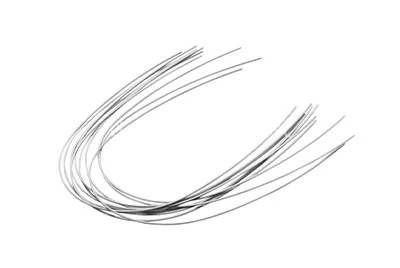
Beta-Titanium NiTi Wire
Combines high elasticity modulus (2× standard NiTi) with excellent formability. Supports repeated intraoral adjustments, ideal for complex or high-control precision cases.
Contact us nowPre-Torqued Archwires Wire
Preloaded with 20° torque at the factory—no manual bending required. Improves efficiency and ensures accurate force delivery, ideal for practitioners seeking standardized and time-saving treatment setups.
Contact us now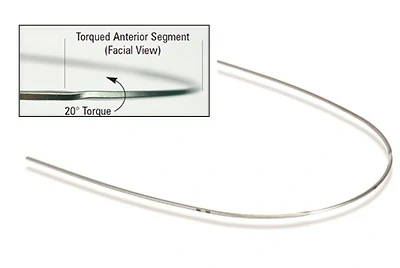
NiTi Archwires by Cross-Section
-
Round NiTi Wire
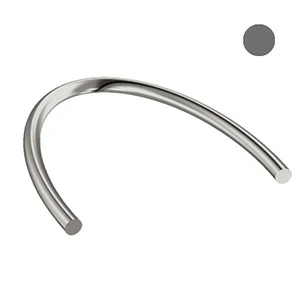
OD: Φ0.014"
Stage 1 – Alignment
Low friction, high flexibility. Ideal for early-stage alignment with reduced patient discomfort.
-
Rectangular NiTi Wire
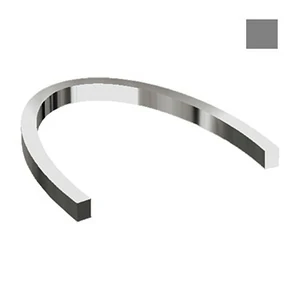
OD: 0.018×0.025"
Stage 2 – Root Control
Provides enhanced torque control for precise tooth root positioning during mid-to-late treatment phases.
NiTi Archwires by Surface Treatment
-
Teflon Coated NiTi Wire
Reduced friction coefficient
Compatible with self-ligating brackets
Enhanced intraoral comfort
-
Tooth-Colored Coated NiTi Wire
2 μm ceramic coating
Color matched to natural enamel
Aesthetic solution for patients seeking invisibility
-
Micro-Arc Oxidized NiTi Wire
Forms 5 μm TiO₂ ceramic layer
Reduces nickel ion release to 0.01 μg/cm²/day
Recommended for patients with nickel sensitivity
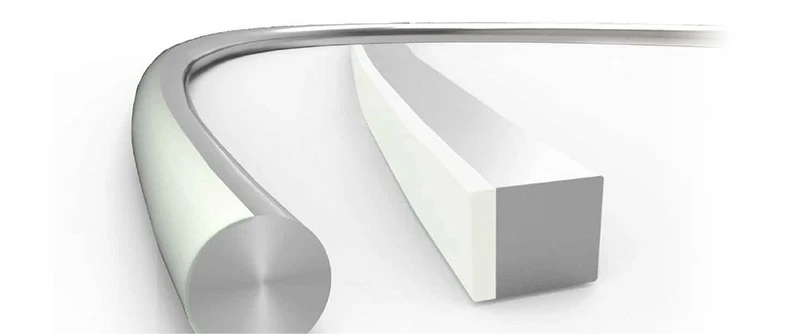
NiTi Archwires by Archform Contour
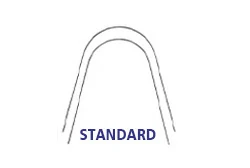
Standard Archform
Designed to match most natural dental arches; widely used in conventional cases and MBT pre-adjusted bracket systems.
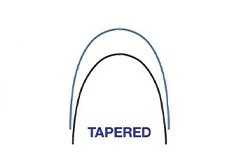
Tapered Archform
Narrow anterior and wider posterior contour. Ideal for patients with crowding in the front teeth and wider posterior segments—enhances comfort and fit.
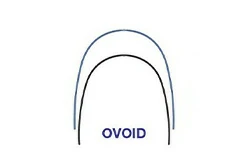
Damon Broad Arch
Wider in the midsection, improving smile arc and facial support. Commonly paired with Damon self-ligating systems.

Square Archform
Sharper angles along the arch, used in specific orthodontic techniques where enhanced torque control is required.
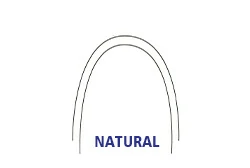
Natural Archform
Closely follows the patient's natural arch contour, offering a higher degree of personalization and anatomical fit.
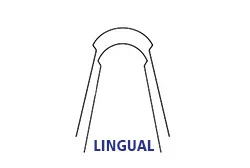
Lingual Arches
Engineered for lingual orthodontics, features a 32° steep curvature for accurate force delivery in tight lingual spaces.
Chalco Titanium offers a full range of NiTi orthodontic archwires, from standard super-elastic wires to customized aesthetic solutions—designed to meet the diverse clinical needs of modern orthodontics.Quick Quote
NiTi Archwire Dimensions & Standards
| Size specification | Round archwire diameter | .012, .014, .016, .018, .020 inches |
|---|---|---|
| Rectangular archwire size | .016×.016, .016×.022, .017×.025, .018×.025, .019×.025 inches | |
| Jaw position | Maxillary archwire | Arch shape optimized for maxillary anatomy |
| Mandibular archwire | Arch shape optimized for mandibular anatomy | |
| Surface treatment | PTFE coating | Teflon coating, friction coefficient ≤ 0.1, improves sliding performance and comfort |
| Tooth-colored coating | Micron-grade ceramic coating, color close to teeth, meets aesthetic invisible needs | |
| Quality standard | ASTM F2063 | Shape memory alloy wire specifications |
| ISO 15841 | Orthodontic arch wire performance requirements | |
| ISO 13485 | Medical device quality management system |
All archwires are manufactured in strict accordance with international standards, ensuring every piece delivers outstanding performance and clinical safety.
Need samples, technical specifications, or custom archforms?
Contact the Chalco Titanium team for tailored recommendations, 1-on-1 consultation, and on-time delivery.Free sample
Clinical Archwire Selection Guide by Treatment Stage
Orthodontic treatment typically progresses through three major stages, each requiring archwires with different performance characteristics, dimensions, and force profiles. Selecting the right NiTi archwire improves treatment efficiency, reduces appointment frequency, and enhances patient comfort.
Alignment Stage
Focuses on arch leveling, smooth force delivery, and controlled space closure.
Low-friction movement: Apply Teflon-coated Super Elastic NiTi wire to reduce bracket friction and enhance sliding efficiency.
Standard treatment: Select 0.016"–0.018" Super Elastic or Heat-Activated NiTi wires, based on patient tolerance and case complexity.
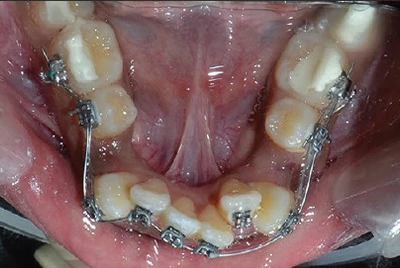
Leveling & Space Closure
For root positioning, torque management, and occlusal fine-tuning.
Archwire selection: Choose 0.017"×0.025" or 0.019"×0.025" rectangular NiTi archwires depending on bracket type and torque needs.
Vertical control: Combine with Reverse Curve or Lingual Archforms to optimize root positioning and bite accuracy.

Finishing & Torque Control
Designed for gentle tooth movement and rapid resolution of crowding or misalignment.
Crowding ≤ 4 mm: Use 0.014" Super Elastic NiTi round wire for high flexibility and consistent light force—ideal for most early-phase patients.
Crowding > 4 mm or sensitive patients: Choose 0.016" Heat-Activated NiTi round wire, which gradually releases force at oral temperature, significantly improving comfort.
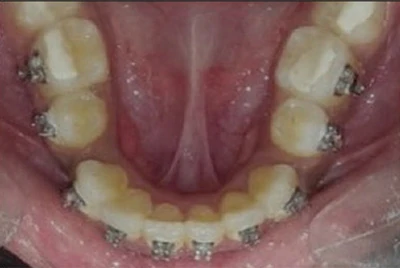
Unsure which wire to choose? Chalco Titanium offers personalized selection advice and custom fabrication of archform profiles and sizes. Contact us today for a tailored orthodontic solution.Quick Quote
NiTi Archwire Solutions for Specialized Orthodontic Cases
Deep Bite Correction
Use Reverse Curve archwire with anterior figure-eight ligation. Achieves a vertical reduction of 1.5 mm in 4 weeks, effectively controlling deep bite while preventing posterior rebound.
Contact us now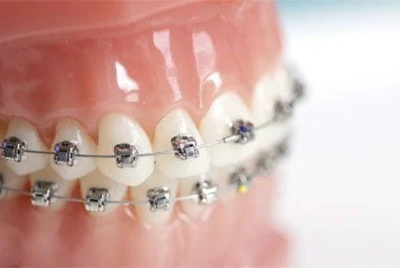
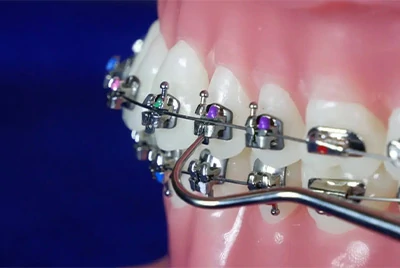
Friction Reduction for Self-Ligating Systems
Combine Teflon-coated Super Elastic NiTi wires with power chains to reduce bracket friction by up to 50%, boosting sliding mechanics and shortening treatment time.
Contact us nowLingual Orthodontics
Select 0.016"×0.022" Super Elastic rectangular wires pre-bent to Lingual archforms. Offers effective force control within tight lingual spaces while maintaining aesthetics.
Contact us now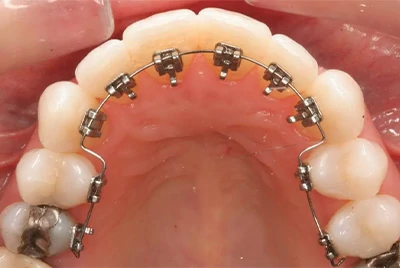
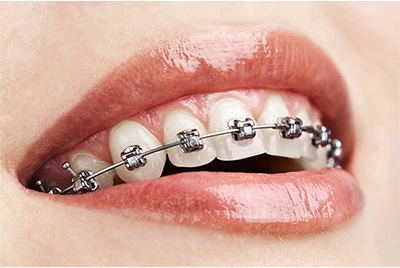
Comfort Treatment for Sensitive Adults
For adults or pain-sensitive patients, choose Heat-Activated NiTi wires (Af = 35 °C). Force is released gradually at body temperature, reducing pain and increasing compliance.
Contact us nowHave a complex case? Chalco Titanium provides a full range of NiTi archwires and custom archform designs to support advanced and specialty treatments. Quick Quote
Clinical Troubleshooting: Common Issues & Practical Solutions
-
 Heat-Activated Archwire Fails to Respond
Heat-Activated Archwire Fails to Respond
When the Af temperature is set too high (> 37 °C) or the wire is slightly deformed by pliers, the wire may not return to its preformed shape.
Solutions
Replace with an Af ≈ 35 °C Heat-Activated NiTi archwire.
Use a temperature indicator strip to verify activation temperature.
Handle wires with needle holders, not direct plier grip.
For immediate relief, advise patients to rinse with cold water to reduce wire activation.
-
 Re-Bending of Cu-NiTi Archwires
Re-Bending of Cu-NiTi Archwires
When minor in-situ adjustment is required, only bends <15° are acceptable.
Restoration Steps
Use a heat gun to apply 300 °C for 10 seconds on the bent area.
Immediately cool with saline irrigation.
This restores ~90% elasticity.
Note: If the bend exceeds 15° or the wire is bent multiple times, replace with a new archwire.
-
 Coating Delamination
Coating Delamination
PTFE or ceramic coatings may peel when exposed to alcohol or ultrasonic cleaning.
Recommendations
Discontinue use immediately upon detecting coating damage.
Flush bracket slots with saline to remove residual flakes.
Inspect for scratches or burrs.
Avoid chemical/ultrasonic cleaning; for patients with severe calculus, coated wires are not recommended.
-
 Rapid Force Degradation
Rapid Force Degradation
Force levels in NiTi wires can decline over time.
Monitoring
Use a tension gauge monthly.
Benchmarks
Premium Cu-NiTi: <5% monthly force loss.
Standard NiTi: ~15–20% monthly loss.
If degradation exceeds 8%, replace the wire to maintain constant force delivery.
FAQs
What is a NiTi archwire?
A NiTi archwire is made from nickel-titanium alloy, featuring shape memory and superelasticity. It delivers light, consistent force at oral temperature to move teeth smoothly and comfortably.
How to distinguish SE and HA NiTi archwires?
Check the packaging for "Room Temp" (SE) or "Heat Act." (HA), or use a temperature test strip. SE wires activate at room temperature, while HA wires require intraoral heat to trigger.
Which is better: stainless steel or NiTi archwires?
Stainless steel wires offer high rigidity and torque precision but have high friction and stiffness.
NiTi archwires provide elastic, light continuous forces, improving patient comfort and reducing root resorption risks.
How to check force loss in NiTi wires?
Use a tension gauge monthly. Replace the wire if force decay exceeds 8%. Cu-NiTi wires typically lose <5% force/month.
When to use Reverse Curve archwires?
Reverse Curve designs are ideal for deep bite and open bite cases, allowing precise vertical control by adjusting anterior-posterior tooth height.
What’s the difference between Copper NiTi and standard NiTi?
Copper NiTi incorporates Cu to narrow phase transition hysteresis and increase fatigue life. It delivers smoother, more stable forces—especially useful in space closure and finishing stages.
How long does PTFE coating last?
PTFE-coated wires are corrosion- and wear-resistant. One archwire typically lasts for a full treatment cycle. Avoid ultrasonic or chemical cleaning to extend lifespan.





